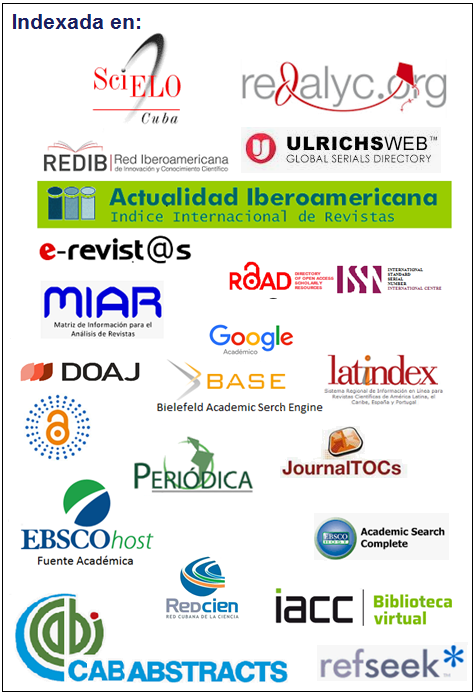Modelación por Elementos Finitos de la ruptura del tubo en el transportador de mineral laterítico reducido
Keywords:
modelación, MEF, ruptura, transportador sinfínAbstract
En la planta de hornos de reducción de las empresas niqueleras de tecnología Caron son frecuentes las roturas en el tubo del transportador sinfín de las instalaciones de transporte de mineral reducido. Para determinar el mecanismo de rotura se modelaron y simularon tubos con agujeros circulares usando diferentes relaciones diámetro interior/diámetro exterior con el fin de conocer la respuesta en el dominio de las tensiones. Se analizaron dos variantes, una con agujero rectangular de extremos redondeados y otra con agujero elíptico. Se observó que las tensiones aumentan linealmente en la medida que el diámetro del agujero se hace mayor y que las tensiones tangenciales máximas ocurren en los concentradores de tensión. En las variantes analizadas la grieta que provoca la ruptura comienza por la parte interior de los agujeros para las mayores relaciones diámetro interior/diámetro exterior así como en aquellos lugares donde la concentración de tensiones es mayor.Downloads
Download data is not yet available.
Published
2007-11-19
How to Cite
Rodríguez-González, I., Fernández-Columbié, T. H., Guardado-Lacaba, R., & Ngendanzi, V. (2007). Modelación por Elementos Finitos de la ruptura del tubo en el transportador de mineral laterítico reducido. Minería & Geología, 23(4), 13. Retrieved from https://revista.ismm.edu.cu/index.php/revistamg/article/view/93
Issue
Section
Articles
Copyright & Licensing
- Authors retain copyright and guaranteeing the right magazine to be the first publication of the work as licensed under a Creative Commons Attribution-NonCommercial that allows others to share the work with an acknowledgment of the work's authorship and initial publication in this journal.
- Authors may establish separate supplemental agreements for the exclusive distribution version of the work published in the journal (eg, place it in an institutional repository or publish it in a book), with an acknowledgment of its initial publication in this journal.
- Authors are allowed and recommended to disseminate their work through the Internet (e.g., in institutional telematic archives or on their websites) before and during the submission process, which can produce interesting exchanges and increase citations of the published work. (See The effect of open access)



